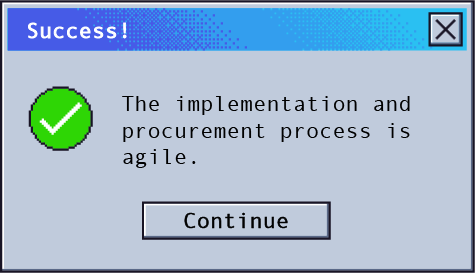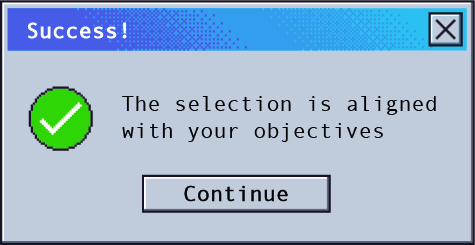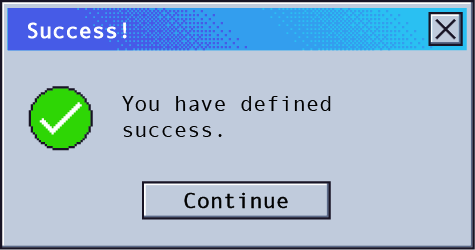4 Tips To Prevent Busted Software Implementations

Gabriel Safar
CEO, Co-Founder | LeasePilot
Today CRE executives are navigating multiple tectonic changes in how we develop, use and monetize the built environment. WFH, e-commerce, climate change and technological disruption are just a few of the challenges the industry is wrestling with, each of which, on its own, is really big and hard to process. The impact of all of these forces acting on the industry simultaneously, however, is more than any company can reasonably expect to figure out. In the face of so much uncertainty, the best strategy is to make your company as nimble as possible so you can adjust and stay relevant.
As the CEO and Co-Founder of LeasePilot, it should come as no surprise that I think the best way for CRE owners to become agile and resilient and to stay relevant is to convert manual processes into software driven systems. That’s easier said than done! Successful software implementations are hard and even the best software can wind-up a fantastic failure and huge waste of money if any one of a seemingly infinite number of things goes wrong.
Fortunately, there are a number of simple strategies that you can use to dramatically increase software implementation outcomes and ultimately ROIs. Here are the 4 that I think make the biggest difference.
1. Design Agile Procurement and Implementation Processes
Software solutions promise a lot. And with enterprise software, the ability to truly test out a solution before making an investment can be very hard. In these situations the best course of action is to think small. By thinking small I mean try to break the software purchase into units that have independent value and stand on their own and then implement each of those units piece-meal in small group settings. The benefits of doing include:
- Reducing risk by focusing on those components of the ROI that are the most uncertain,
- Simplifying feedback loops by working with fewer users,
- Delivering units of value faster to key constituents to sustain user enthusiasm, and
- Creating reportable wins early that executives can point to to justify the investment of individuals’ scarce time and energy.
When I suggest this approach to customers I often get a lot of push back. Some of that pushback is reflexive since thinking small when you are trying to achieve ambitious objectives seems counterintuitive.
There are potential drawbacks of taking such an incrementalist approach to software procurement. For example, important benefits may be deferred until a later date, the total system implementation time-frames may be longer than they otherwise would be, and you may need to go through multiple user training cycles. In my experience, however, the benefits of taking an incrementalist approach to buying enterprise software solutions are so profound that they easily outweigh any drawbacks.

2. Include Users in the Procurement Process
A successful software deployment starts with the sales process. I can’t tell you how many times I have met with user groups that resist adopting a solution that will clearly make their lives easier simply because they feel they didn’t have a voice in the decision (this is especially true with knowledge workers). Giving users a voice, however, doesn’t mean they should have a veto.
Change often requires executive leadership, and the most effective software procurement processes have strong sponsors that own a vision and genuinely seek input from users to understand their needs and pain points. I recommend having users give their input in a group setting such as a departmental meeting and subsequently documenting that input in a brief that accompanies any materials supporting the purchasing decision. That way the user group’s input is public and acknowledged which is generally sufficient to make critical stakeholders feel included.

3. Make sure any software rollout directly aligns with pre-existing objectives
One of the biggest reasons software projects fail is a lack of user adoption. There are lots of obvious reasons for poor user adoption, including a bad user interface, insufficient training, inadequate customer support and the like. But one of the most common reasons, which is less obvious, is users just don’t have a good reason to care. Too frequently software has some amazing enterprise benefit for executives or other constituents, but for the day-in and day-out users, the software is just a burden and the individual users chaff at what they see as an additional obligation. Framing a software investment as a tool to help achieve a pre-existing objective that users are already accountable for will create a powerful incentive for users to make a personal investment in learning a new system.
Imagine, for example, an office tower owner has set its sights on being recognized within the next 12 months as the best in the industry for tenant satisfaction, and the engineering team has a corresponding key result to cut the number of service requests in half. In this case, the engineering team will view implementing and using a tenant experience platform as directly helping them achieve their pre-existing target to cut service requests. Without the tangible connection between adopting a specific software solution and important initiatives users are personally accountable for, users often don’t have the incentive to work through the growing pains that inevitably come with adopting new ways of doing things. (For a separate discussion on using a goal setting methodology called Objectives and Key Results to help you CRE company change its business trajectory with astonishing speed see the blog post I wrote called OKRs for Commercial Real Estate.)

4. Agree on Success Metrics and Measurement Methodologies Before Going Live
Enterprise software systems generally have the potential to create value for multiple stakeholders in a company. But in many cases, those stakeholders have competing objectives which can result in uncoordinated and incompatible definitions of success. When this happens, it’s pretty clear, even if the rollout is perfect, someone will be unhappy and consider the initiative a failure. To prevent that from happening, make sure you work with your vendor to put a customer success plan in place before the software goes live.
At a minimum this success plan should:
- Define what the software is intended to do
- State the desired impact on the business
- Identify metrics to determine if that impact is achieved
- Lay out a measurement methodology
A representative of each constituency should contribute to the development of the plan and then get listed on the title page as a co-author. At the time the software goes live, the first success meeting should already be scheduled and a representative of each constituency should confirm they will attend the meeting to review progress against the plan.

CRE owners have to become agile and resilient to stay relevant in the current business environment. That means implementing software systems to replace manual processes. Doing so isn’t easy. Fortunately, I can tell you from experience that adopting the 4 simple strategies described in this post will make implementing new software faster, less expensive and ultimately more effective.
